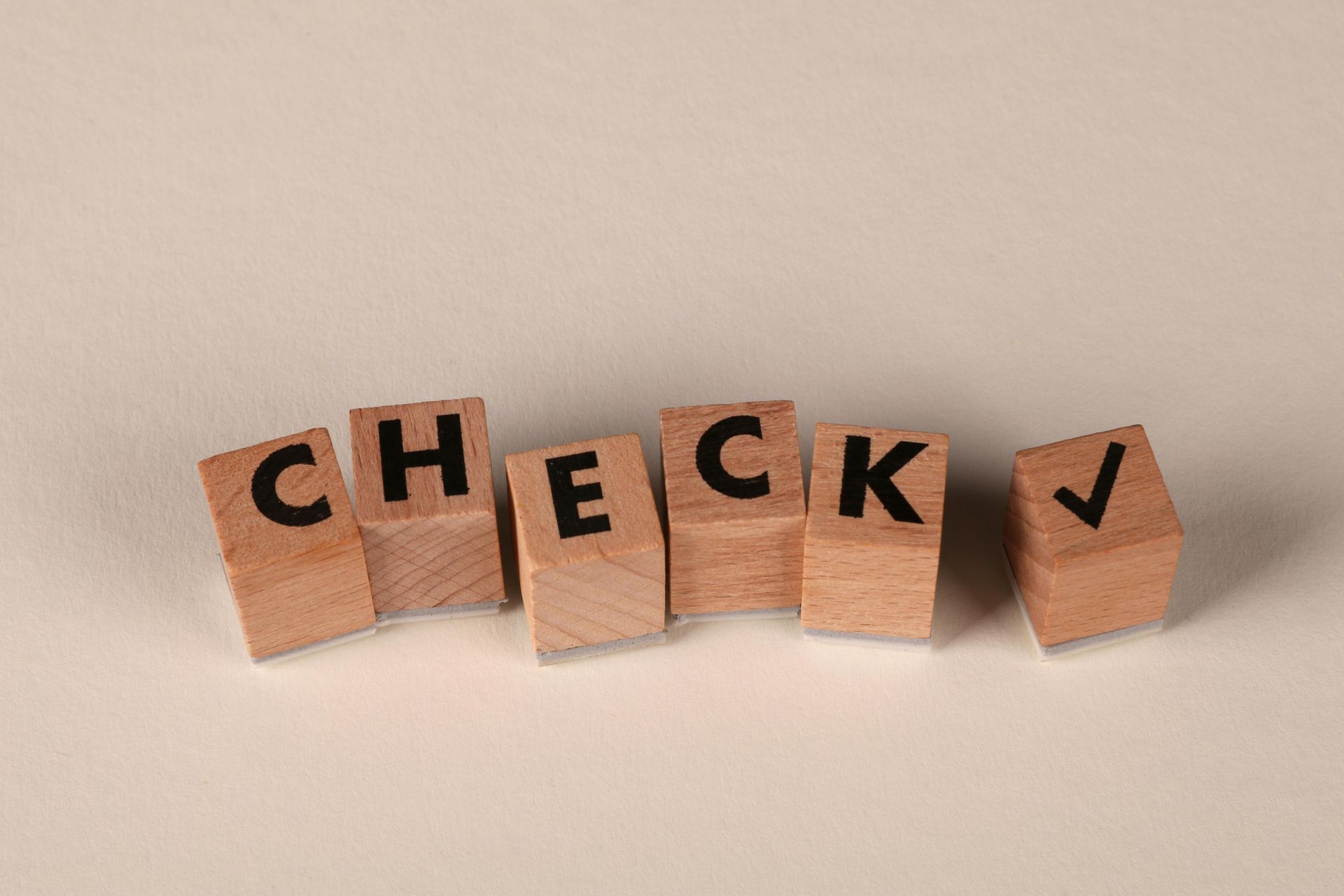Need Help With Your Trademark Section 8 & 9 Filing?
Texas Trademark Attorneys!
Trademark Incontestability: How and When Do You File a Section 8 & 9 Declaration
The Section 8 and 9 Renewal is a crucial document filed with the United States Patent and Trademark Office (USPTO) to maintain and renew a trademark registration. This renewal applies to trademarks registered under Section 1(a) (use in commerce) or Section 44(e) (U.S. registration based on a foreign trademark registration). You must provide the USPTO a sworn statement that confirms your mark is in use in commerce for all the goods/services listed in the registration. If any goods/services are not in use or cannot claim excusable non-use, they will be removed from the registration when filing the Section 8 Declaration.
Key Filing Deadlines for Section 8 and 9 Declarations:
Section 8 Filing at the 5th Year Anniversary
- Initial Filing: Between the fifth and sixth anniversary date of the registration.
- Subsequent Filings: Within the year before the end of every ten-year period after the date of registration.
Section 8 & 9 Filing at the 10th Year Anniversary
- Initial Filing: Between the nineth and tenth anniversary date of the registration.
- Subsequent Filings: Within the year before the end of every ten-year period after the date of registration.
We highly recommend filing a Section 15 Declaration of Incontestability along with a Section 8 Declaration, which should be filed between the fifth and sixth year after registration. For trademark owners, timely and accurate filing of the Section 8 and Section 15 Declarations is crucial to avoid the risk of losing trademark protection. Registrants will file USPTO form 1583 entitled 'Combined Declaration of Use and Incontestability Under Sections 8 and 15' to complete a Section 8 and Section 15 filing.
Requirements for Filing the Section 8 Renewal
To file the Section 8 Renewal with the USPTO, you must meet the following requirements:
- Verified Statement: Provide a verified statement confirming your trademark is currently in use in commerce for the goods and/or services listed in your registration, unless you’re claiming excusable nonuse.
- Renewal Request: Submit a request to renew your registration for the specified goods/services.
- Specimen Submission: Provide at least one recent specimen of use per class of goods/services listed in your registration, unless you’re claiming excusable nonuse.
- Government Filing Fees: Pay the applicable government filing fees, which vary based on the number of classes listed in your registration.
If your trademark is no longer in use for all the goods and/or services in your registration, you must delete any goods/services you’re no longer offering. If your Section 8 and 9 Renewal meets all these requirements, the USPTO will accept it, and your trademark registration will remain active. If it does not meet all requirements, the USPTO will issue a post-registration office action explaining why the renewal could not be accepted (e.g., a trademark specimen refusal). It is important that you follow the USPTO guidelines and ensure that all elements are correctly submitted to avoid delays or rejections in maintaining your trademark registration.
Key Differences between a Section 8 and 9 Renewal Filing
Section 8 and Section 9 filings serve distinct purposes. Section 8 focuses on confirming ongoing use or excusable nonuse of a trademark, while Section 9 is strictly for renewing the registration. In terms of timing, Section 8 must be filed between the 5th and 6th years after registration and then every 10 years, whereas Section 9 is filed every 10 years. Additionally, the content of these filings differs: Section 8 requires proof of use or a statement of nonuse, while Section 9 requires a formal renewal request. Understanding these differences is crucial for maintaining and renewing your trademark registration effectively. Registrants will file USPTO form 1963 entitled 'Combined Declaration of Use and Incontestability Under Sections 8 and 9' to complete a Section 8 and Section 9 filing.
Ensuring Continued Trademark Protection: Essential Evidence for Section 8 Filings
The essential purpose of a Section 8 filing is to provide evidence of continued use of the registered trademark in commerce. This evidence demonstrates to the United States Patent and Trademark Office (USPTO) that the trademark is still actively being used in connection with the goods or services originally listed in your trademark registration
Here are examples of commonly required evidence for a Section 8 trademark filing:
- Specimens of Trademark Use:
You must be able to show the trademark office specimens of how the trademark is currently used in commerce. For example, specimens of goods can include photographs or scans of the trademark on product packaging, labels, tags, or the product itself. For services, specimens can include screenshots of the trademark as displayed on websites, advertisements, brochures, or other promotional materials showing the actual trademark.
- Dates of Trademark Use:
Along with specimens showing your trademark in use, you must provide the dates when the trademark was first used in commerce and validate the dates of continued use in commerce. It is important to show the trademark office that your trademark use is a continuous and uninterrupted period of trademark use, which is crucial for maintaining trademark rights.
- Declaration of Trademark Use:
You must sign and file a sworn statement or declaration confirming that the trademark is still in use in commerce for the specified goods or services. This statement or declaration is typically signed by the trademark owner or their legal representative. The declaration will include details such as the trademark registration number, the dates of first use and continued use, and a description of the goods or services associated with the trademark.
- Supporting Documentation for your Trademark:
It is possible the trademark office may require additional documentation to support the claim of continued trademark use. Such additional evidence of trademark use can include invoices, receipts, catalogs, advertising materials, or other documents showing the sale or distribution of goods or the provision of services under the trademark.
It's important to ensure that the evidence provided is accurate, current, and sufficient to satisfy the USPTO's requirements for a Section 8 trademark filing. Failure to provide proper evidence of continued use can result in the cancellation or abandonment of the trademark registration.
Understanding Section 15 Declarations of Incontestability
A Section 15 Declaration of Incontestability is a crucial legal tool for trademark owners. Filed with the United States Patent and Trademark Office (USPTO), this declaration solidifies a federally registered trademark's incontestability under federal law. By submitting this declaration, trademark owners assert their incontestable rights to the trademark, provided they have continuously used it for a minimum of five years. This process is essential for enhancing and protecting trademark rights in the competitive market. Consolidating your Section 8 and Section 15 filings results in cost savings for trademark owners. By submitting both declarations simultaneously, you avoid the need for separate filings and extra fees.
What is Excusable Non-use in a Section 8 Trademark Declaration?
When a trademark owner finds themselves unable to use their trademark, it's vital to prove that this nonuse is due to circumstances beyond their reasonable control. Below are examples that may constitute special circumstances excusing nonuse; however, your specific circumstances should be reviewed by a lawyer before suggesting an excusable nonuse to a trademark examiner.
Decreased Demand: If there's a decline in demand for the product associated with the mark, leading to its discontinuation for an indefinite period, it isn't considered a special circumstance excusing nonuse. The requirement for an affidavit or declaration aims to filter out registrations that are in nonuse due to regular market fluctuations.
Trade Embargo or Uncontrollable Events: Nonuse may be excusable if the owner is willing and able to continue using the mark but is prevented from doing so due to external factors like a trade embargo or other uncontrollable events.
Sale of Business: Temporary nonuse during the sale of a business might be excusable. However, this depends on the specifics of the situation and whether efforts are made to resume trademark use promptly.
Retooling: Nonuse due to the temporary interruption of production for retooling of a plant or equipment may be excusable. However, it's only considered so if the owner demonstrates that the retooled equipment was essential to production and no alternative equipment was available on the market.
Orders on Hand: In cases where the product cannot be quickly or readily produced, but there are existing orders and active efforts to fulfill them, nonuse may be excusable. This demonstrates an ongoing commitment to the mark's use.
Illness, Fire, and Catastrophes: Temporary nonuse resulting from events like illness, fire, or other catastrophes may be excusable if the owner outlines plans for the resumption of trademark use once the situation is resolved.
Negotiations with Distributors: Efforts to negotiate agreements that would allow for the resumption of mark use, or statements indicating that samples have been shipped to potential distributors, don't establish special circumstances excusing nonuse. Instead, they may indicate an intention not to abandon the mark.
Frequently Asked Questions About Section 8 Trademark Renewals
Does Using a Trademark in a Foreign Country Constitute an Excuse for Section 8 Purposes?
Using a trademark in a foreign country does not excuse nonuse of the trademark for Section 8 purposes in the United States. The requirement for Section 8 is to demonstrate the continued use of the trademark in commerce within the United States jurisdiction, as regulated by the United States Patent and Trademark Office (USPTO). Therefore, while foreign use may be relevant for other purposes, it does not fulfill the requirements for maintaining a trademark registration under Section 8 of the USPTO regulations.
Understanding Business Decisions and Nonuse: Implications for Trademark Owners
When a trademark owner faces nonuse of their mark due to a strategic business decision, such as a change in product focus or a shift in business strategy, it's important to understand how such circumstances are evaluated in the context of excusable nonuse. A strategic business decision is a deliberate choice made by the trademark owner regarding the direction or operation of their business. This could include decisions to discontinue certain product lines, pivot to different markets, or rebranding efforts to better align with evolving consumer preferences or market trends. Simply put, trademark nonuse resulting from a strategic business decision generally doesn't qualify as beyond the owner's control and therefore doesn't excuse nonuse.
Maintaining Trademark Validity Across Goods, Services, and Forms for Section 8 Compliance
Trademark registrations are specific to the goods or services listed in your initial trademark registration. Using the mark on goods or services other than those specified in your trademark registration, or modifying its form, doesn't automatically excuse nonuse. Simply utilizing your trademark in a different context or on unrelated products or services doesn't qualify as a special circumstance justifying nonuse.
To ensure the ongoing validity of a trademark registration under Section 8, the mark must be actively used as registered. This means that the mark should be consistently applied to the goods or services precisely as described in the registration. Any deviation from this specified usage can jeopardize the trademark's validity and expose it to potential challenges or cancellation proceedings. For example, if you registered your mark for use on clothing items but instead use it on unrelated products like consumer electronics or services like professional consulting, this material change from the registered goods or services will not constitute excusable nonuse. Similarly, altering the appearance, look, or form of the trademark, such as changing its design or presentation or claimed color, will not constitute a valid excuse for nonuse if it does not match the registered form of your mark.
Supplementary Evidence or Explanation: Strengthening Your Excusable Nonuse
If the USPTO determines that the provided facts don't sufficiently establish excusable nonuse, you will have the opportunity to submit supplementary evidence or explanations explaining why you do meet the requirements for excusable trademark nonuse. The USPTO affords owners the opportunity to provide additional comment, context, or evidence to support their claim of excusable nonuse.
Is there a Grace Period for Filing a Section 8 Trademark Declaration?
Are you worried about missing your filing deadline with the USPTO? The USPTO provides a grace periods for Section 8 declarations, Section 71 declarations, and combined Section 8 and 9 filings. You can still submit these documents up to six months after the due date. For example, if you miss the original deadline of January 1, 2024, you have until July 1, 2024, to submit your Section 8 declarations, Section 71 declarations, and combined Section 8 and 9 filings. However, keep in mind that submissions during this grace period require an extra fee of $100 for Section 8 or 71 declarations, and $200 for combined filings. Stay ahead of the game and maintain your IP rights effortlessly with the USPTO's grace period. Contact us today to learn more about extending your filing deadline with ease.
What Will Happen If I Don’t File By the Maintenance Deadline?
Owners of trademark registrations often neglect to file the Section 8 and 9 Renewal due to the substantial time between renewal periods. Unfortunately, failing to file the renewal will result in the USPTO canceling your trademark registration. This means you will lose all the protections and benefits of owning a federal trademark registration.
While you can file a new trademark application to replace your canceled registration, you will have to start the entire registration process from scratch. To avoid this, ensure you file the Section 8 and 9 Renewal on time to maintain your trademark registration and its associated benefits.
Need to File the Section 8 and 9 Renewal?
The lawyers of Wilson Whitaker Rynell are experienced US trademark attorneys. If it's time to file the Section 8 and 9 Renewal and you feel uncertain about preparing and filing it yourself, don’t hesitate to contact our law firm for a free and confidential consultation. Reach out to us by phone at 972-248-8080, or via email at info@wwrlegal.com, or through the contact form at the bottom of this page. We look forward to assisting you with your trademark needs.
Trademark Maintenance and Compliance Services Experts in Texas
At Wilson Legal Group, we're your trusted partners for trademark maintenance and compliance services across Dallas, Houston, Austin, and Texas. Our experienced legal team ensures meticulous trademark management and compliance with regulatory standards. Collaborating closely with clients, we craft tailored strategies for long-term trademark protection and legal compliance. Partner with us to safeguard your trademarks effectively.
For expert guidance and representation in handling trademark maintenance and compliance, contact us at Wilson Legal Group today.


Have an idea for a blog? Click and request a blog and we will let you know when we post it!











